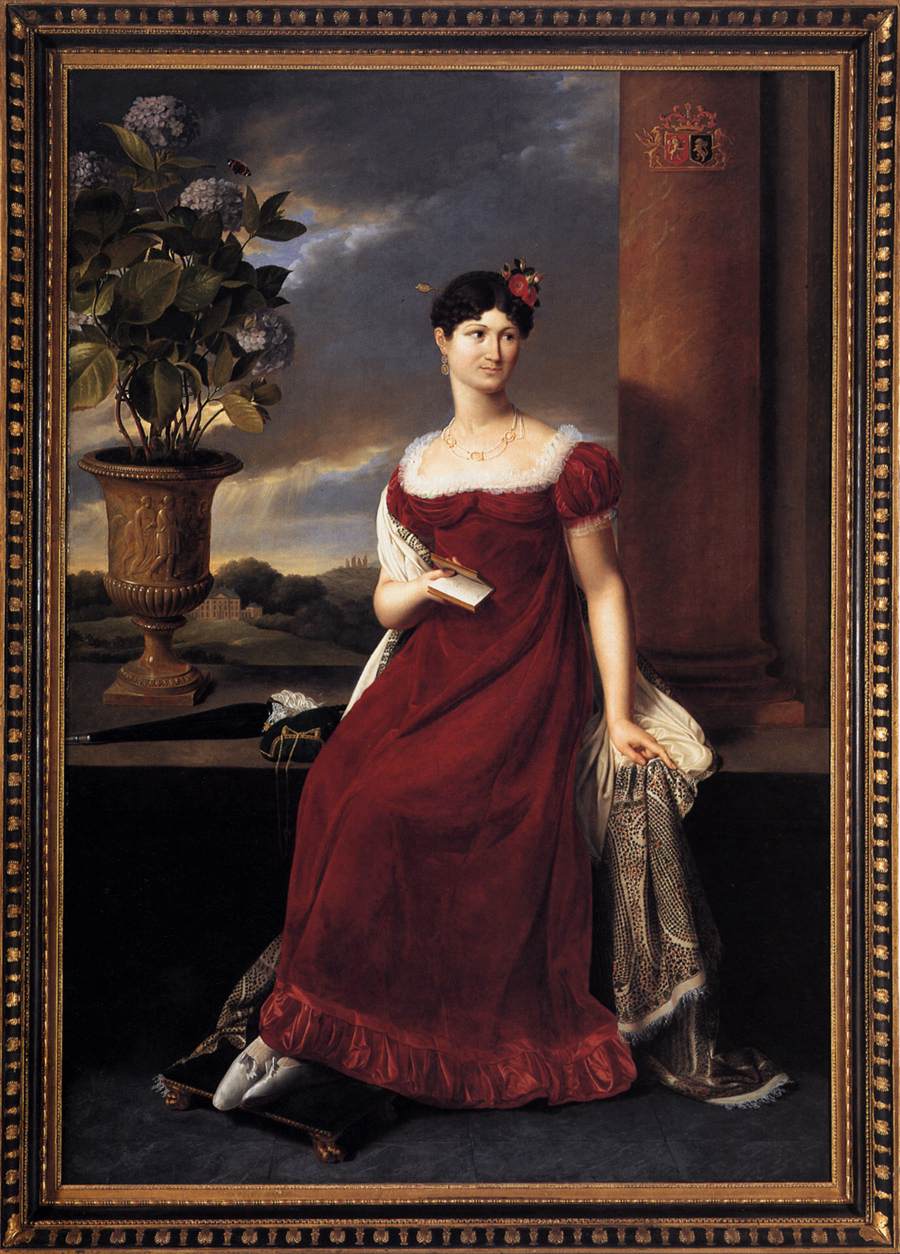Description
The painting "Mary Lodge, Bride of Baron Charles-Louis de Keverberg de Kessel" by artist Joseph-François Ducq is an 18th-century masterpiece that has captivated art lovers since its creation. This work stands out for its refined and elegant artistic style, which combines elements of Rococo and Neoclassicism.
The composition of the painting is impressive, with the central figure of Mary Lodge framed by an exquisitely detailed garden background. Mary Lodge's pose is graceful and graceful, her white dress and jewelry highlighting her natural beauty. Baron Charles-Louis de Keverberg of Kessel, her husband, is depicted standing by her side, with an expression of love and admiration on his face.
The color in this painting is vibrant and full of life, with soft pastels contrasting with the darker, more dramatic details of the characters' clothing. Intricate details in the painting, such as the flowers and birds in the garden behind Mary Lodge, add an extra dimension to the work.
The story behind the painting is fascinating, as it was commissioned by Baron Charles-Louis de Keverberg of Kessel as a gift for his wife. The painting was created in 1783 and remained in the Baron's family for many years before being acquired by the Boston Museum of Fine Arts in 1931.
Despite its beauty and popularity, there are little-known aspects of this painting that make it even more interesting. For example, it is believed that the model for Mary Lodge was the English actress and singer Mary Linley, who tragically died at the age of 22 in a carriage accident. Furthermore, the painting is believed to have been influenced by the work of the French artist Jean-Honoré Fragonard, whose Rococo style is reflected in the delicacy and grace of the composition.
In summary, the painting "Mary Lodge, Bride of Baron Charles-Louis de Keverberg of Kessel" is an impressive work of art that combines elements of Rococo and Neoclassicism in an elegant and refined composition. Its vibrant color and fascinating history make it even more interesting for art lovers and historians.

